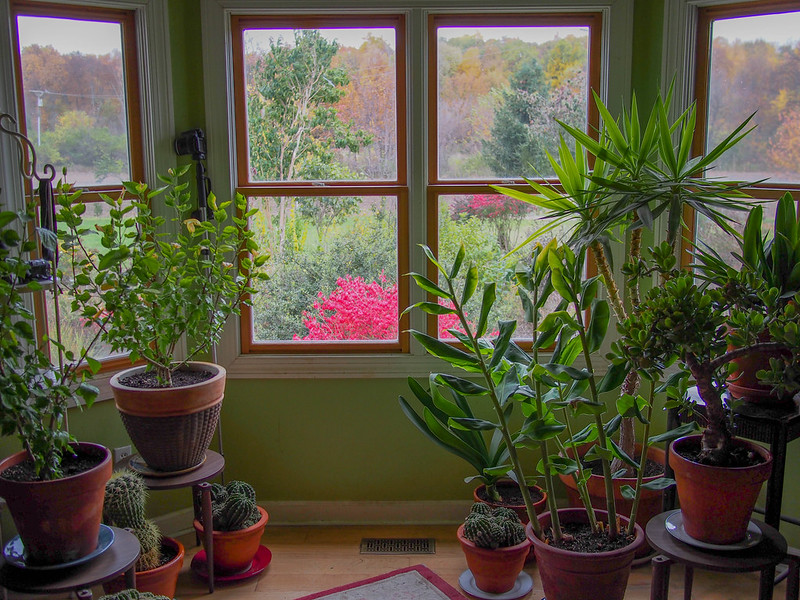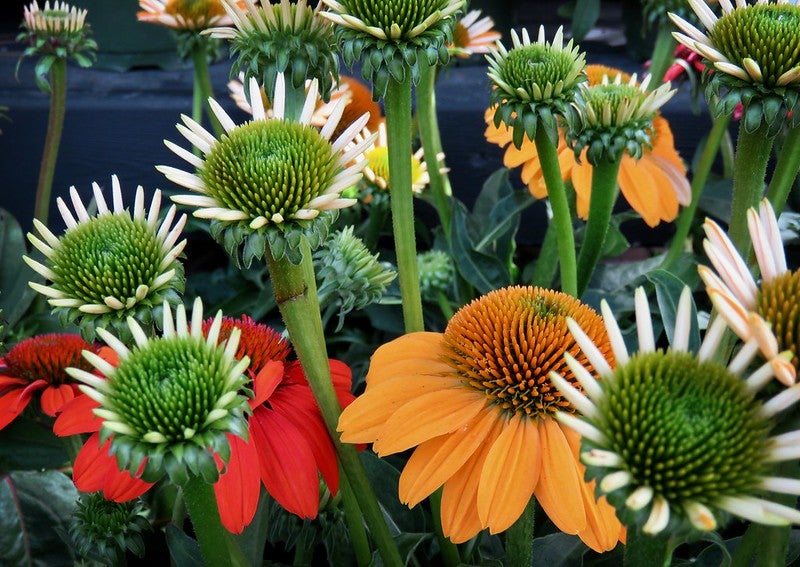Horticulturist Tovah Martin prefers to call indoor plants home plants rather than houseplants. That label fits better with her belief that indoor gardens should be designed to bring joy and comfort to your home.
Martin, a perennial, heirloom, vegetable and cottage gardener and author of numerous books, said she wouldn’t have made it through the pandemic without them. And as we look ahead to a winter predominantly spent indoors, designing and caring for a garden in your home can offer a wide range of benefits.
“I make it comfy, cozy, and I design with them. They’re part of my family, they’re part of my decor,” she said.
News with a little more humanity
WPR’s “Wisconsin Today” newsletter keeps you connected to the state you love without feeling overwhelmed. No paywall. No agenda. No corporate filter.
“They’re so totally therapeutic. They give us something to take care of and they quench our inner nurturer,” she said. “And they’re beautiful and very tactile.”
Here’s what to think about before you begin designing your home garden, according to Martin.
Assess Your Light
Martin said to scope out your windows — are they facing south, east, west or north? What you’re able to grow will depend on the light you have available.
“Let’s start from the beginning, because it all has to do with light,” she said. “Nothing will really practically grow without light.”
It’s not just about the direction the windows face. Also consider if there are things, such as overhangs, that cut off the light. And remember that the amount of light will differ with the seasons.
“Winter light is different than summer light,” Martin said. “In fall and winter, the foliage is off the trees. So you might get a lot more light than you get in summer.”
Find Ways To Place The Plants Close To Light Sources
You might need to move furniture around or rally your plantstands, Martin said. Be creative. A stack of old suitcases makes a great plantstand.
“A lot of people think, ‘Oh, I don’t have a whole lot of plant stands and I don’t really want to go out shopping right now,’” she said. “One of my favorite tricks is to turn a nice looking wastepaper basket upside down, and voila, you’ve got your plant stand.”
[[{“fid”:”1388416″,”view_mode”:”embed_portrait”,”fields”:{“alt”:”indoor garden, tovah martin”,”title”:”indoor garden, tovah martin”,”class”:”media-element file-embed-portrait media-wysiwyg-align-right”,”data-delta”:”1″,”format”:”embed_portrait”,”alignment”:”right”,”field_image_caption[und][0][value]”:”%3Cp%3EOne%20of%20Tovah%20Martin’s%20indoor%20gardens.%20%3Cem%3ESubmitted%20photo%26nbsp%3B%C2%A9%20Tovah%20Martin%3C%2Fem%3E%3C%2Fp%3E%0A”,”field_image_caption[und][0][format]”:”full_html”,”field_file_image_alt_text[und][0][value]”:”indoor garden, tovah martin”,”field_file_image_title_text[und][0][value]”:”indoor garden, tovah martin”},”type”:”media”,”field_deltas”:{“1”:{“alt”:”indoor garden, tovah martin”,”title”:”indoor garden, tovah martin”,”class”:”media-element file-embed-portrait media-wysiwyg-align-right”,”data-delta”:”1″,”format”:”embed_portrait”,”alignment”:”right”,”field_image_caption[und][0][value]”:”%3Cp%3EOne%20of%20Tovah%20Martin’s%20indoor%20gardens.%20%3Cem%3ESubmitted%20photo%26nbsp%3B%C2%A9%20Tovah%20Martin%3C%2Fem%3E%3C%2Fp%3E%0A”,”field_image_caption[und][0][format]”:”full_html”,”field_file_image_alt_text[und][0][value]”:”indoor garden, tovah martin”,”field_file_image_title_text[und][0][value]”:”indoor garden, tovah martin”}},”link_text”:false,”attributes”:{“alt”:”indoor garden, tovah martin”,”title”:”indoor garden, tovah martin”,”class”:”media-element file-embed-portrait media-wysiwyg-align-right”,”data-delta”:”1″}}]]Martin also places her plants on the rungs of small step stools and ladders, which she said can make a nice little vignette. Even chairs make great plant stands. Think about what you already have around your home.
Think About Your Decor And Find Containers That Fit The Mood
First, match your plants to your light availability and choose plant varieties that speak to you, Martin said. Then, forget about ugly plastic pots — you want containers that will reflect your style and add to the interior scene. Don’t just plop a plant in a corner, design the space.
Maybe you want to do some indoor trees. Martin does a variety — including tropical ficus or even conifers.
“I find that chamaecyparis, the false cypress, makes a great houseplant,” she said. “Any type of juniper — they are my little woods inside. You could get Norfolk Island pines for the holidays.”
Or maybe you want to grow something you can eat — like fresh basil or microgreens.
Basil likes a lot of light — as much light as you can possibly give it, Martin said. It’s also a good idea to rotate it (and other plants) so it’s balanced well.
“I find that they’re so easy to grow from seed that I just get a packet of seed, and every month or so I plant a new little group of basil and they pop up and it’s fun,” she said. “I keep a succession going so that I’ll always have basil to cut.”
Wisconsin Public Radio, © Copyright 2025, Board of Regents of the University of Wisconsin System and Wisconsin Educational Communications Board.



